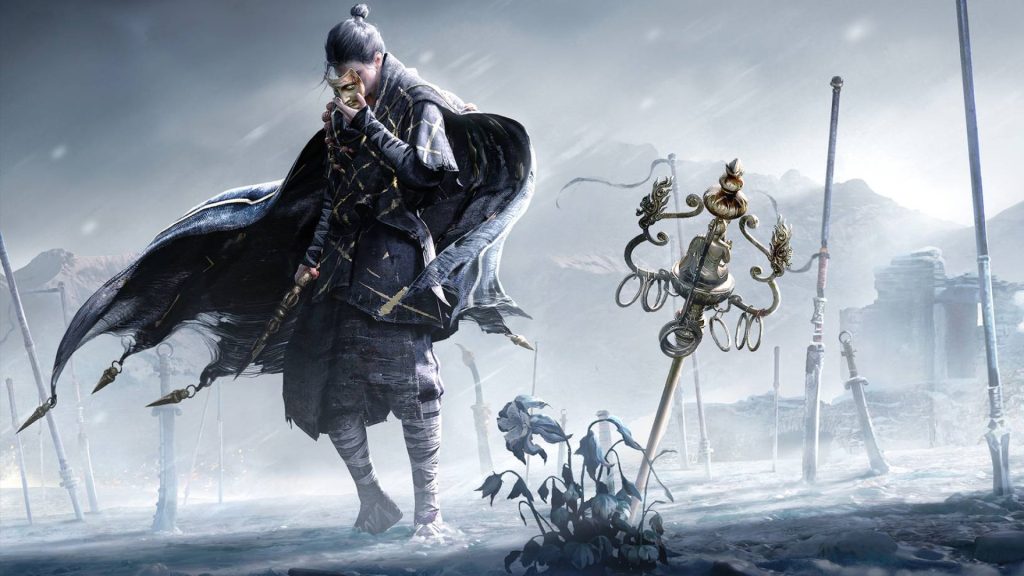Over the last couple of months, I’ve been cautiously following Everstone Studio’s Where Winds Meet, an open-world action-adventure RPG that blends several popular genres into one sweeping package. This space is hardly empty; titans like The Witcher 3: Wild Hunt, Elden Ring, and the recently released Ghost of Yotei loom large, and the genre has continued to thrive throughout this generation. So, when Where Winds Meet promised a substantial, story-driven campaign, heaps of side content, and full PvP and co-op support, I was understandably skeptical. Too good to be true, right?
Fortunately, I was given access to a review build, and after spending dozens of hours with it over the last few weeks, I’m happy to report that my skepticism has largely melted away. Not only does Where Winds Meet deliver a wealth of quality content, it frequently goes beyond what you’d expect from a free to play release, offering breadth without sacrificing quality. In short, it has surpassed my expectations in nearly every way, though there are a few caveats I’ll get to shortly.
“Where Winds Meet has been localized, though the review build I played was missing several audio files, which made certain moments feel a bit jarring.”
You take on the role of a young sword master, a wanderer who lives outside official ranks and forges a personal code while drifting from place to place across 10th-century China during the Five Dynasties and Ten Kingdoms period. Brought up under the tutelage of Uncle Jiang and Aunt Han, your precious jade pendant is stolen, kicking off a main plotline that carries you through the gorgeous regions of Kaifeng and Qinghe. As the story progresses, the tone turns a shade darker with the introduction of an artifact known as the Gold-Making Vessel, and, as expected, a few familiar twists along the way. I’m not here to spoil the story, but the overall narrative is engaging, helped by a solid spread of well-timed cutscenes.
Where Winds Meet has been localized, though the review build I played was missing several audio files, which made certain moments feel a bit jarring; though what’s present is voiced to a generally satisfying level. There are lip syncing issues and a few character models also look a tad off, occasionally pulling you out of the moment.
The developers have indicated they plan to update the game, but it’s worth noting these rough edges. Even so, the story and its various threads keep you invested and curious to learn more. Overall, I appreciate the narrative for what it is and how it’s presented, but more than the plot, I suspect players will come away loving the gameplay most.
I appreciate how quests are structured in Where Winds Meet. The most engaging are the campaign missions, packed with cutscenes and drama, but the side content is also noteworthy. There are full-blown side quests that send you across the world’s mysteries and secrets; some can last up to an hour and even end with a challenging boss fight, covering everything from hunting ancient artifacts to solving a murder mystery.
Clearing the side quests in each region was a complete blast. There are also smaller diversions, your usual fetch quests, random open-world encounters, and something called Wandering Tales. These don’t hold your hand and require exploration to find the next clue.
Finally, there are world bosses (yes, distinct from the campaign bosses) that can be brutally challenging if you aren’t sufficiently leveled or prepared. Enemies, from regular mobs to bosses, aren’t pushovers and will put up a fight, though the regulars have a perception issue where they didn’t notice me taking out nearby comrades. It’s jarring but forgivable. All of these little things add up to the unforgettable moments you’ll make in this world.

“The game clearly indicates how to acquire new Martial Arts sets, sometimes sending you on unique side quests or nudging you to join a faction.”
There’s also the “Hundred Industries” guild system in Where Winds Meet, a spin on clans, split into multiple branches with a weekly slate of varied activities and missions. For players willing to invest the time, it genuinely adds longevity, with clear rewards that should bolster player retention. It’s deep, highly replayable, and one of the more ambitious F2P guild designs in recent years.
Undoubtedly, the biggest draw in Where Winds Meet’s gameplay is its in-depth, complex combat. Built on 12 Martial Arts sets and dozens of Mystic Arts techniques, it delivers some of the best wuxia style fighting in contemporary games. You’ll wield distinctive weapons like sword, rope dart, umbrella, and fan, and each can be upgraded to unlock genuinely exciting abilities. For example, the umbrella can fire projectiles, while the spear can unleash sonic shockwaves. Weapons also have different types: one fan might specialize in healing, while another excels at ranged DPS.
The game clearly indicates how to acquire new Martial Arts sets, sometimes sending you on unique side quests or nudging you to join a faction. Combat is further amplified by Mystic Arts, a suite of special abilities that let you pull off over the top moves like dropping a giant bell on enemies, charging in on a flaming horse, or releasing poisonous mist.
Mystic Arts are also key for unlocking “miscellaneous” upgrades like multiple dodge variants, slowing time while aiming the bow, and traversal options like diving, wall-running, and even short bursts of flight.

“As you may have gauged already, there’s a fair bit of grind in Where Winds Meet, expected in a free to play game, but in my playthrough it felt balanced.”
Then there are Internal Arts, special boosts that raise damage, max health, or other stats, and reduce certain cooldowns, and even increase the chance for your hits to inflict poison, among other effects. As with Martial Arts sets and Mystic Arts, Internal Arts can be upgraded to higher tiers by finding the required collectibles. You also have the Gear section, where you upgrade global parameters: right-hand and left-hand damage, helmet HP, and the defensive values on greaves and bracers. These, too, require specific materials to progress, with each upgrade tier asking for its own set of components. Taken together, all of the above creates an engaging progression web where unlocking and upgrading naturally pushes you into quests and exploration to hunt down what you need. I found it to be a genuine risk and reward loop, and an addictive one for me.
As you may have gauged already, there’s a fair bit of grind in Where Winds Meet, expected in a free to play game, but in my playthrough it felt balanced. Importantly, I didn’t find it to be pay to win. The economy itself is rather convoluted, with multiple currency types (which defies common sense a bit, but here we are). There are a dozen or so in total.
To explain a few: basic gold is procured through quests, exploration, and combat. Note that these specific earnings are region-locked; you can earn in one region and only exchange limited amounts across regions. Then there’s Treasure Money and Jade, which are earned through selling, completing quests, chests, exploration, and events.
Nothing in my experience made me think about spending real money. Reportedly, they are only for cosmetics. There’s plenty of content here, and while the loop can become grindy over time, the monetization stays fair, although the economics can feel confusing at first. Where Winds Meet offers co-op, but my time with it was limited.
I did find a partner, though the experience was laggy: my sword slashes often registered a beat after I pressed the controller buttons, which I’m hoping was a review server issue rather than indicative of launch performance. The game also features PvP, including a balanced mode that minimizes gear differences for fair play. I can see myself sinking a lot of time into this making it easily the most addictive part of the online suite.

“The combat is outstanding, the campaign is genuinely intriguing, and the sheer volume of content is staggering.”
On the technical side, Where Winds Meet looks gorgeous. The open world is the star of the show with beautifully designed regions with green fields and villages, a world that begs to be explored. As mentioned earlier, character models and lip-sync could be better, but other details like world density, lighting, and combat animations are a treat. Audio design is serviceable; it could be sharper, but it’s acceptable overall. Performance was strong on my PC (Nvidia RTX 3080 Ti, 32GB RAM, AMD Ryzen 9 5950X): I maxed out settings at 4K and the game ran great, with only minor dips.
To conclude, Where Winds Meet is stunning, and one of 2025’s best experiences so far. The combat is outstanding, the campaign is genuinely intriguing, and the sheer volume of content is staggering. There are rough technical edges and the grind won’t be for everyone, and there’s always the worry that the economy could shift later, but right now Where Winds Meet is on the right path. In its current state, it’s a genuinely good game you and your buddies can enjoy for weeks, with online hooks that add real longevity. With more narrative content promised, and hopefully aligned across regions, I’m eager to see where Everstone takes it next. For now, Where Winds Meet is a winner.
This game was reviewed on PC.


